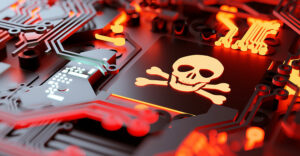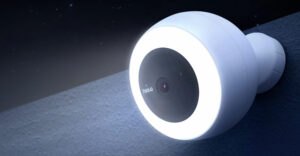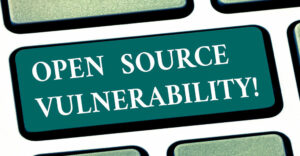
The end of this year marks the halfway point in the first decade of the twenty-first century, and the tech industry has already gone through a number of dramatic changes.
Compaq has ceased to exist as a company, having been fully integrated into HP, while IBM has gone the other way, divesting itself of both storage and personal computers. Apple has become the king of personal music players but is not really thought of as a power in computing anymore, and Microsoft has taken the momentum away from Sony in multimedia.
Industry Trends
The new companies to watch are Symantec, which has defined successful growth by acquisition, and Oracle, which now has the potential to steal from Microsoft the leadership of the most profitable part of this market.
Intel is under siege, on one hand demonstrating the successful application of the Microsoft Office strategy with Centrino, and on the other opening up the business market to AMD through execution failures. The developing world is being attacked by AMD as well as VIA, a company many missed as it quietly rose with an Intel-like strategy.
Linux, not Windows, is the platform with all of the buzz, as the next version of the dominant platform slipped out of this period. But Linux has transitioned from being the fun platform backed by practitioners to one defined by litigation as well as by company battles, with IBM, Novell and Red Hat fighting for control. What is left of the original team is publicly lamenting how much time they spend arguing and how little actually getting things done. This is a clear example of the dangers of becoming a mainstream offering.
September 11 helped redefine our focus on security, which has become the benchmark against which all things are measured. Meanwhile, companies have been using questionable practices to choose products that often made them less secure. People are increasingly mobile, products are becoming smaller, and consolidation across a number of related high-tech industries has made the landscape difficult to navigate. The next 5 years promises much more of the same.
The companies to watch in the second half of the 2000s are Microsoft, Oracle, HP, Dell, Symantec, Cisco and IBM Microelectronics.
Software: Microsoft vs. Oracle
Microsoft remains the dominant company in the segment, but it is clearly under siege. With an inability to do sustaining marketing, its customers are overwhelmed with negative news surrounding foundation products. This is a prime example of marketing as a competitive weakness, and it has become Microsoft’s greatest exposure as it is forced to compete against products that shouldn’t yet be competitive.
There are some bright spots for the firm, however. It is expected to pass Sony in the console gaming segment by avoiding Sony’s Osborn-like mistake (Osborn was a company that went under by prematurely promoting a product it didn’t yet have) and by building a better game development platform. Microsoft should be able to expand its dominance in embedded systems by continuing to focus more on customer needs than on per-unit revenues. And Janus, the subscription-based media delivery product, has the potential to have a massive impact on the digital music business. But the market is Microsoft’s to lose, and as a company it has clearly demonstrated that it is easier to chase a leader than to be one.
Oracle is now the heir apparent for the Microsoft crown. The world we are moving to is one with massive centralized services, and Oracle is positioning itself to be the dominant software company in this new world. The firm has a culture suited to rapid acquisitions, and at this point even the hostile nature of many of them may not make much of a difference. The first test will be PeopleSoft, but Oracle’s successful completion of this merger should set the stage for a number of rapid-fire acquisitions that will complete the set. Still, integrating companies will be a lot easier than integrating products. And .Net exists — but if you remember Microsoft’s inability to articulate the advantages of its offerings, you’ll see a much more level playing field and one that may now favor Oracle.
Hardware: HP vs. Dell
Given IBM’s second divestiture — with more expected to follow — HP is already the next IBM. It is the dominant vendor in the emerging media center segment, and it retains dominance in printing and imaging. HP is a strong number two to Dell in PCs and has a more comprehensive product set. With surprising strength in marketing, it is the only vendor to successfully emulate Apple’s skill set and the only vendor to private-brand an Apple product. To succeed, HP must assure a high-quality experience with all of its offerings. This removes some control from product group managers, something we haven’t seen in a company like HP since the Watsons left IBM. Without that, pressure to break up the company will increase, with IBM serving as the model. HP’s danger is being caught in the middle; its opportunity is the chance to dominate as IBM dominated. It will all come down to teamwork.
Dell is at the opposite extreme. It operates on a simpler model that requires more partners but fewer team players, focused more on costs and less on company cohesiveness at a product level. Basically, Dell is a sales and logistics engine that operates with minimal overhead. This is the model that became the ideal in the ’90s, and Gateway is now emulating it. Easier to execute but containing risks associated with technology advancement, it depends heavily on IBM and HP’s inability to execute, and Microsoft and Intel adequately make up the difference. Dell’s exposure is one of control: It can dominate a segment but not an industry. Should the market move to AMD and/or Linux, Dell becomes increasingly exposed, because neither of these supplies the complete core platforms that Dell requires for its model to work.
Security: Symantec Stands Alone
In a consolidating industry, a company expert at doing acquisitions has a significant advantage, and this advantage defines Symantec. With its recently announced acquisition of Veritas, Symantec moves closer to becoming the dominant company in security software, a market in which a broad spectrum of highly integrated products should create an overwhelming competitive advantage.
Considering the comprehensive nature of its offerings, there really isn’t another company in Symantec’s class right now. The risk comes from the nature of the market, which does not fully embrace comprehensive packages and still makes a massive number of purchases based on point products. Symantec could be nibbled to death by small players like Sybari, which may perform key functions better.
Networking: Cisco Dominance Holds
In a world where being networked is critical and where Internet telephony is the new way to communicate, the dominant company in the networking space is king, and that company remains Cisco. With little in the way of competitive threat on the horizon, Cisco in its segment is where Microsoft was in the late ’90s — at the top of its game and seemingly untouchable.
Companies in this position, however, often get arrogant, and execution problems follow. The second half of this decade will define whether Cisco has learned from those that came before, or simply will follow those same disastrous footprints.
IBM Microelectronics: Massively Disruptive
With Intel’s execution problems opening the doors to competition and all eyes focused on AMD, IBM Microelectronics is the company to watch. Although software could go first, this unit, by capturing all console gaming platforms and demonstrating technology leadership in key areas, could become a major challenger for Intel in the processor segment.
Ten years ago Apple, Novell, 3Com and Sun began their slide, while Dell, Microsoft and Cisco rose to the powers they now are. Ten yeas ago Linux was fun and interesting; now it is more interesting but far less fun. The future is uncertain, but one thing is sure: It won’t be boring.
Rob Enderle, a TechNewsWorld columnist, is the Principal Analyst for the Enderle Group, a consultancy that focuses on personal technology products and trends.





















































